#ts'íts'àsh
Explore tagged Tumblr posts
Text
The Ts'íts'àsh (Firish) Language from Elemental
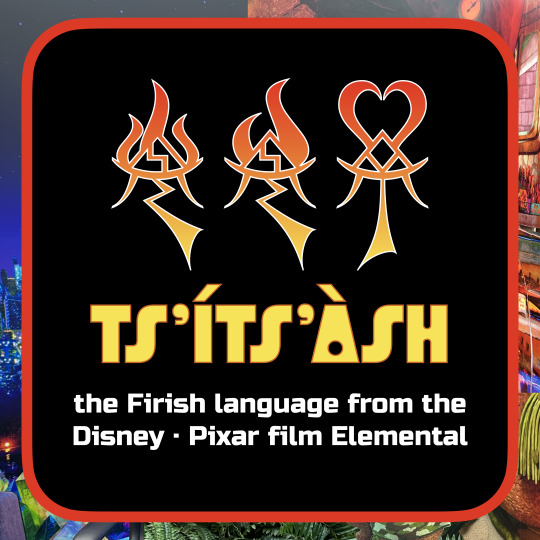
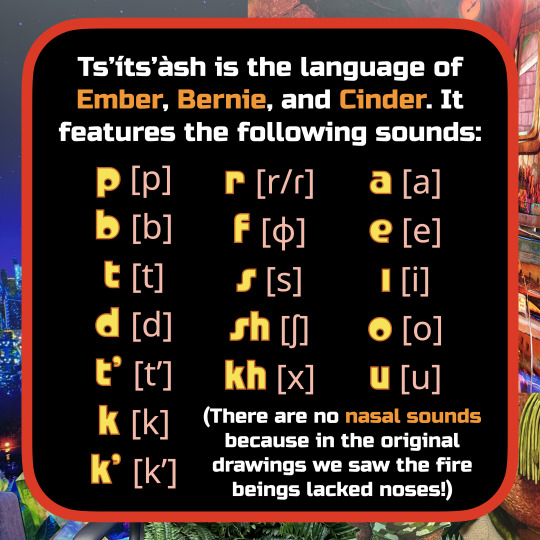
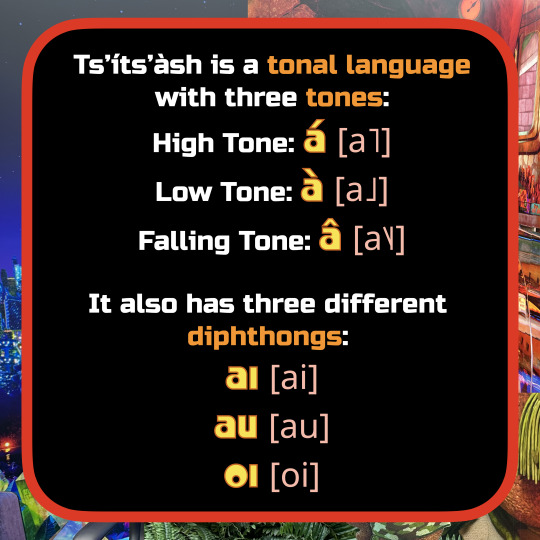
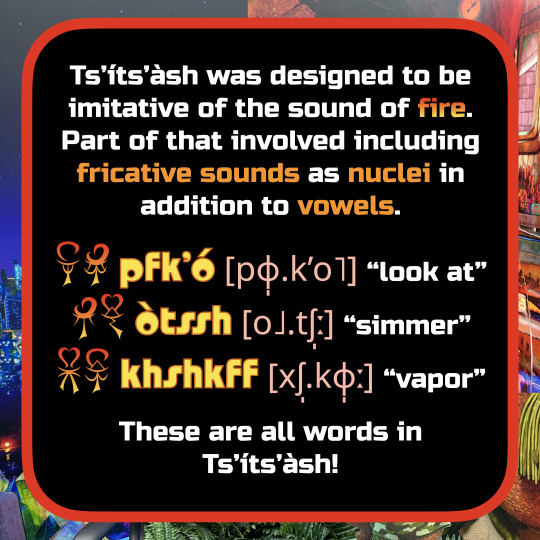
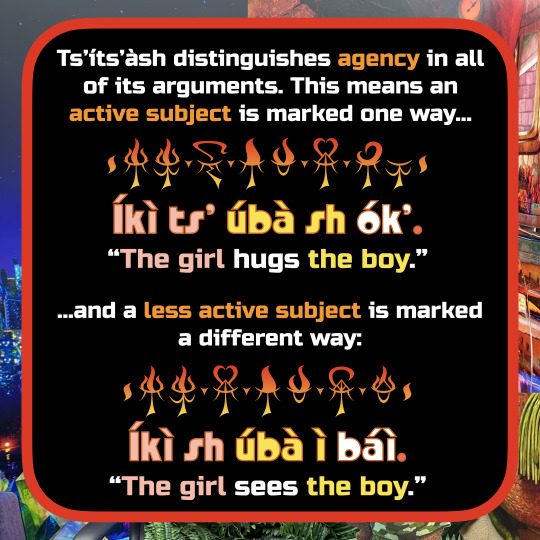
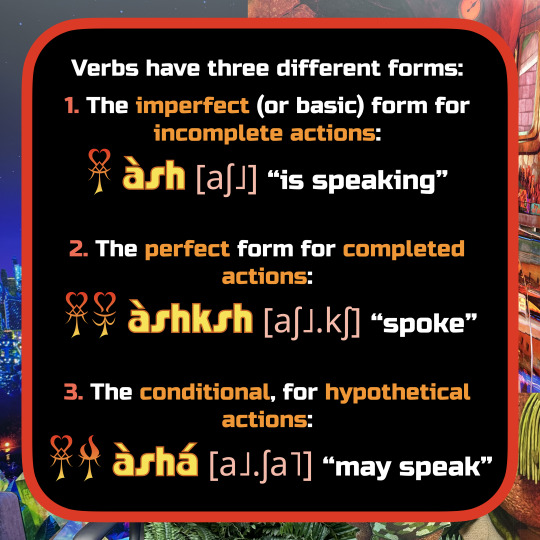

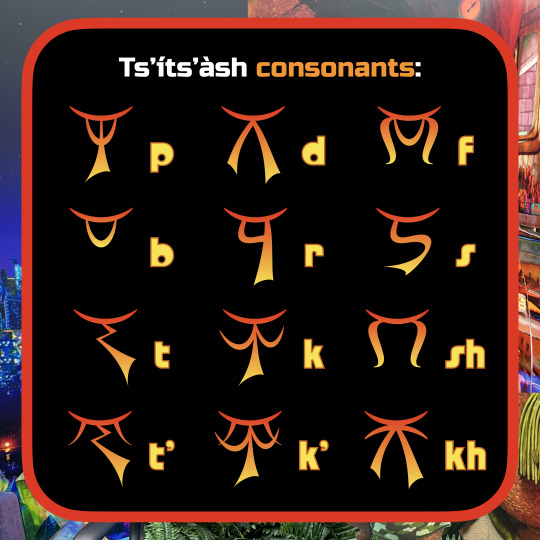


Ìf báì!
Jessie Sams (@quothalinguist) and I created a language for Pixar's latest film Elemental. We created both a spoken language and writing system that are used in spots throughout the film. It's out today, so if you watch it, see if you can spot any of it! We had a lot of fun creating a language the requested "sound like fire". A tough thing to do with a human mouth, but we had some fun with it! Some language highlights:
Ejective consonants
No nasals
Fricative nuclei
Fluid (ha, ha) case system
Glyphs that resemble braziers
If you check it out, we hope you enjoy it!
4K notes
·
View notes
Text
This is entirely hypothetical for an extent Elemental cultures:
Lava elementals speak a dialect of Ts'íts'àsh that adds bubbling and explosive consonants to the mix.
Ice elementals do not speak a dialect of the water-language, but have their own tongue that invokes the sounds people make when they are cold and the crackling of ice.
Steam elementals speak a creole of ts'its'ash and water-language, with loanwords from air-language.
Electricity elementals speak a crackling dialect of ts'its'ash that really makes use of the "k", "r", and "z" sounds, often in place of vowels.
Metal elementals speak a much more "refined" dialect of Earth-language that incorporates that banging of steel and bronze, the clanging blades, the churning of clockwork. It's a lot quicker to speak and can convey a lot more information for less work.
My headcanons for other Elementals languages:
Assuming the English we hear and read is just the Water-language translated for our convenience, I imagine the actual language to have a phonetic library that invokes splashing noises, the crashing of waves, and the rushing of rivers; with a healthy dose of slurps and gulps thrown in.
The Earth-language sounds like rattling and cracking stones, groaning earth, and the snapping of twigs. Vowels are held in such a way as to make speech a slow and patient process and consonants are often rolled. Clicks are a prominent feature.
The Air-laguage is breathy and whispy. Expect the letter H to show up in every word and some phonemes require you to inhale inorder to pronounce them correctly.
394 notes
·
View notes
Text
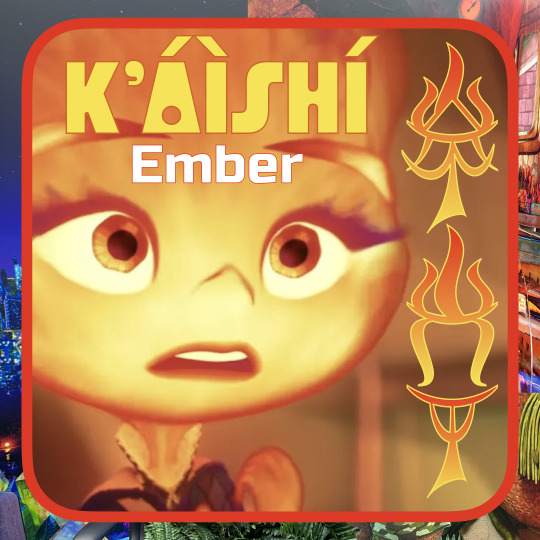
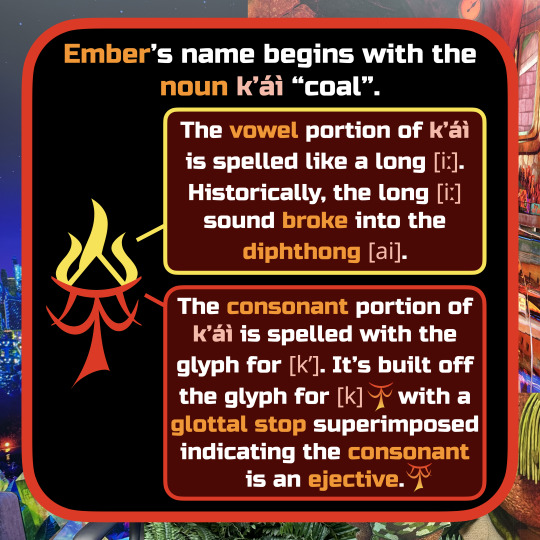
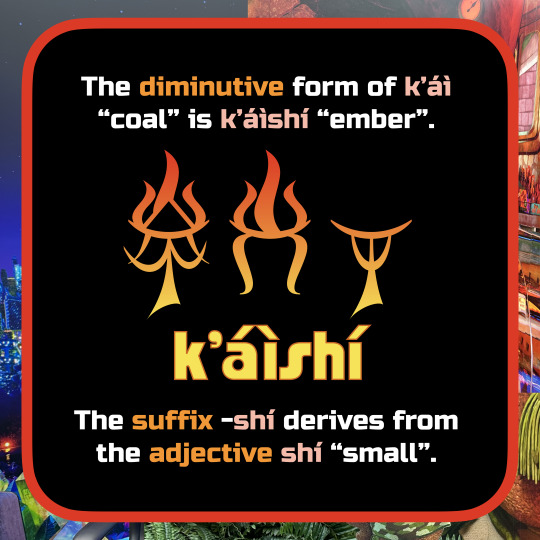
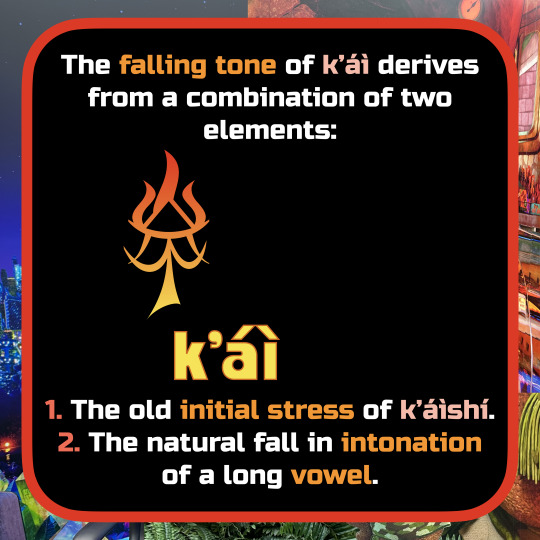
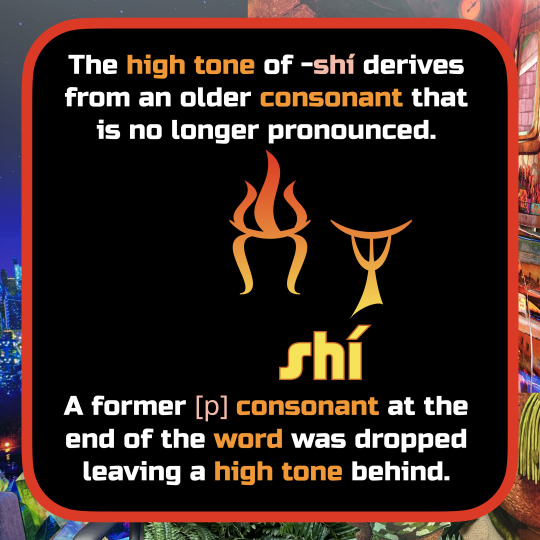

Sharing some Ts'íts'àsh names starting with Ember's. Will share more about the language soon.
#conlang#language#elemental#pixar#pixar elemental#elemental pixar#ts'íts'àsh#ts'its'ash#firish#ember#elemental ember#orthography#conscript#neography#constructed script
659 notes
·
View notes
Text
Ts'íts'àsh Language from Elemental
Hey, I just wanted to throw this out there. I've been getting a lot of requests for info about the Ts'íts'àsh language from Pixar's Elemental, and I totally want to answer them, but I did want to make something clear. While this is my Tumblr (so I'll be answering asks, etc.), I didn't create the language by myself. Jessie Sams and I created the language together.
Now, when I say that, you might think like I did the nouns and Jessie did the verbs, etc., but that's not really how we work. We sit down together with our laptops on the couch working on the same document in Pages (shared via iCloud), and we sit there and create every single bit of the language together. There's no part of it you can point to and say that it's all me or all Jessie: The whole thing is us. That's how we work.
If you've sat through the credits of Elemental, you'll see that only I'm credited. That was, in a word, bullshit. We also had no control over it. We can say whatever we want ahead of time, but who gets credited—or whether we get credited at all—is totally at the mercy of the studio. Even when it's written into our contract it sometimes doesn't happen. We noticed that we didn't get the credit in our contract for Peacock's Vampire Academy, and we complained, and the best they could do is credit us in the episodes they hadn't finished yet—the last one. And so we're in the credits only for the very last episode in which we have no lines.
This is an unfortunate part of the job. As language creators, no one in Hollywood knows what we do, and they certainly don't care if we don't get credit. It's up to us to make sure people even know that we worked on something.
Anyway, in this case, it's really important to me that everyone knows this was a joint project of mine and Jessie's. It's our work, and we deserve equal credit.
#conlang#language#quothalinguist#jessie sams#elemental#pixar elemental#elemental pixar#tsitsash#ts'its'ash#ts'íts'àsh#hollywood#language creation#orthography#neography#conscript#constructed script
392 notes
·
View notes
Note
can you make a translator for firish i want to use it in my rps i have with friends
I've actually gotten this question a couple times, which is great! But this type of thing just isn't possible with a conlang. It has nothing to do with the quality of the conlang or the level of completion (i.e. the amount of vocabulary, how much of the grammar has been recorded, etc.), and I'll tell you specifically why.
First, you may have seen "translators" for various languages online like LingoJam. LingoJam not only has translators for a bunch of different languages, but allows you to make your own translators. The way these work, though, is you write down a word in one language and write its translation into another—something like:
English > Spanish
I > yo
am > soy
to > a
the > el
store > tienda
going > yendo
That is, you put in one to one correspondences, and that's what it has to work with. Once you're done, if you ask for a translation, it looks up the words and sees what's available and it spits back what it has, in order. If we had this very minimal English to Spanish dictionary (which is 100% accurate, by the way! That is, all of these English words can be translated as all of these Spanish words), you could ask LingoJam to translate the following into Spanish...
I am going to the store.
...and you would get...
Yo soy yendo a el tienda.
Now, if you speak Spanish, you'll see all the places this went wrong. (Short version: You don't always need subjects pronouns in Spanish; you use a different helping verb for "to be x'ing" in Spanish; you rarely actually use this "to be x'ing" construction in Spanish; the present tense is sufficient; though el means "the", it's the wrong gender for tienda—analogous to saying "an store" as opposed to "a store" in English.) And you can actually avoid this in LingoJam by adding phrases on top of single words:
English > Spanish
the store > la tienda
I am going > voy
But you can imagine how much work that would be...
The reason why things like LingoJam are so popular, though, is because imagine if you knew nothing about Spanish. Typing in "I am going to the store" and having it instantly spit out "Yo soy yendo a el tienda" is pretty darn satisfying! If you don't know it's wrong but you're happy with it, what's the problem?
Now, a language like Spanish is huge, so it's easier to get accurate Spanish translations online than it is to get accurate Korean translations online—and it's easier to get accurate Korean translations online than accurate Tigrinya translations online, etc. The reason for that takes us to Google Translate.
I think most people know that with LingoJam, you get what you pay for. Google Translate, on the other hand, is much more sophisticated, and much more accurate. It's not 100%, but it's pretty darn good—for widely spoken languages. This is why.
Way back when, Syfy facilitated a chat between me and the folks at Google Translate because they wanted to see if Google and I could work together to create a translator for a couple of my Defiance languages at TED in 2013. After all, we had a full two weeks. We could bang something like that out in two weeks, right? (lol no)
I learned then how Google Translate works. Google Translate doesn't actually know anything about the specific grammar of a language—maybe a couple language specific tweaks, but it's not as if you can go under the hood and find a full grammar of Spanish that tells you when to use the subjunctive, what all the conjugations are, etc. Instead, what Google Translate has is a database (i.e. Google, along with Google Books, Google Scholar, etc.) with tons of, presumably, fluent documents written in the various target languages offered on Google Translate. They also have faithful translations of those documents—not all, but a percentage. Google Translate uses that information to predict what a given sentence in one language will turn into in another.
In order to do this successfully, Google Translate needs BILLIONS of documents to troll. And it has that. It has BILLIONS of articles written in Spanish and translated to English. That's why the English to Spanish translation is as good as it is.
Now, having said that, anyone who's bilingual in English and Spanish knows that Google Translate isn't perfect. Sometimes it's pretty good, but sometimes it produces a lot of clunky, unnatural, or even incorrect translations. This is because there isn't a human back there calling the shots.
But that's its best translator. Now imagine translating between English and Samoan (one of the other languages it offers). There are EXPONENTIALLY more online articles in Spanish than Samoan. Consequently, the translations you get between English and Samoan on Google Translate are absolutely no guarantee.
And bear in mind, there's a kind of minimum threshold they work with before adding a language to Google Translate. If Samoan is on there and not Fijian, it's because there's that much more Samoan online than Fijian.
Now let's go back to conlangs. What Google Translate wants is BILLIONS of articles written online in the target language. Forget how complete the grammar of a conlang is, whether you can find that description online, or how many thousands of words the conlang has. How many fluent articles are there written in that conlang that are online? How many can one person to? How about a team of people? And how many conlangs have that?
This is why Google Translate has Esperanto and nothing else. Esperanto has been around for 136 years, and in that time there have been a good number of people who have learned to speak it fluently, and have written things (poems, articles, books) that are now online. It is as much as Spanish? Certainly not, but it is enough to hit Google Translate's minimum threshold, and so it's available.
Assuming you have a conlang with a full grammar and a good amount of vocab, if it were popular, it might have enough available material for Google Translate to work with 125 years from now. But at the moment, it's not possible. That says nothing about the language: It's about how Google Translate works.
And bear in mind, Google Translate is, at the moment, our best non-human translator.
If predictive-AI gets good enough that it can learn the grammar of a language, then it may be possible to produce a translator for a new conlang. That, though, is not the goal of Google Translate. Maybe ChatGPT and things like it will get there one day, but even that isn't a dedicated language learning AI. We need an AI that doesn't work with billions of fluent articles, but works with two books: a complete grammar and a dictionary. If an AI can one day work with those two tiny (by comparison) resources and actually produce translations that are as good as or better than Google Translate, then we'll be at a "translation-on-demand" place that will be good enough to feed a new conlang to. At that point, it will simply be a matter of producing a grammar and lexicon of sufficient size for the AI to do its thing.
So, no, right now we can't do a Ts'íts'àsh translator. :( We can go over things like the sound system and basic grammar and you can create your own words to work with it... A lot more work, but hey, we don't have to churn our own butter or milk our own cows anymore! We've got time!
#conlang#language#linguistics#translation#google#google translate#ai#elemental#pixar elemental#firish#tsitsash#ts'its'ash#ts'íts'àsh#syfy#defiance#spanish#translator
288 notes
·
View notes
Text
WADE LEARNING TS'ÍTS'ÀSH






Much doodles
(praying I got the translation right)
87 notes
·
View notes
Note
Was your Firish writing system used anywhere in Elemental? Most appearances of the written language seem to use an English cipher.
If you mean did the glyphs we created ever appear, yes, they did; we saw them all over the place. Now, were they ever used to write anything specific, as opposed to just being used for decoration in random ways? That I don't know. We did send them a list of some things spelled out correctly, but I don't know if they used them. It would've been nice to do some of the things that were in focus (like an open and closed sign), but we never had any communication with the art department.
You have to understand: It's a rare thing to get to even do a writing system. On many shows/films (Game of Thrones, Thor: The Dark World, Emerald City, Paper Girls) production finds the very notion of a language having a unique writing system somewhat comical. Others (The Shannara Chronicles, Raya and the Last Dragon, Halo) find the notion that the language creator(s) would create the writing system used in the show amusing. We weren't hired to create a writing system for Elemental. We told them we could do it and they said no. We did it anyway. And after they saw it, they decided they liked it and would use it. That doesn't happen often!
So yeah, the fact that they didn't use the writing system to spell things out accurately? Not a big deal. You think everything in the background of Defiance was spelled correctly? There were dozens of pill bottles in Doc Yewll's office with over 200 words of text on them each. That was just gibberish done in the Indogene font, because, frankly, no matter how much you zoom in on those Doc Yewll scenes, you will never be able to read that writing (nor will you be able to see that what filled the pill bottles were things like oyster crackers).

(I still don't get why the art department insisted on using this script vertically. I created a script where every character is a hexagon, meaning that every single character and every single line could interlock perfectly. And then they stack them?!)
#j-p-smith64#conlang#orthography#elemental#pixar elemental#disney elemental#disney#pixar#conscript#language#firish#Ts'íts'àsh#ts'its'ash#tsitsash#defiance#syfy#indogene#indojisnen#constructed script#neography
183 notes
·
View notes
Text
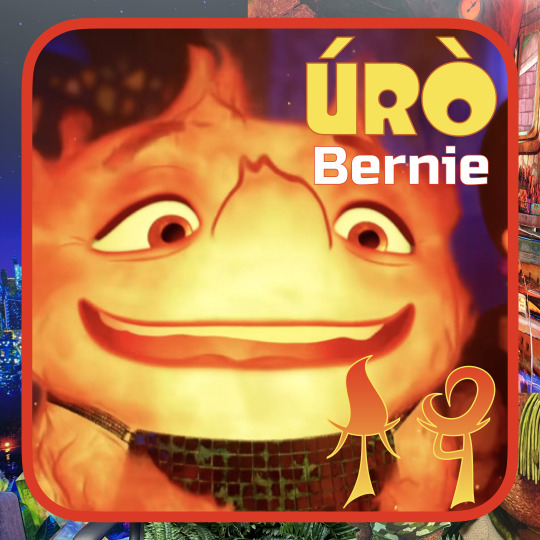

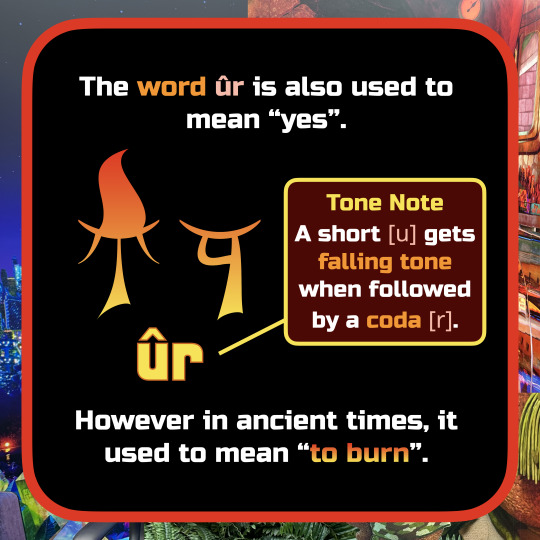
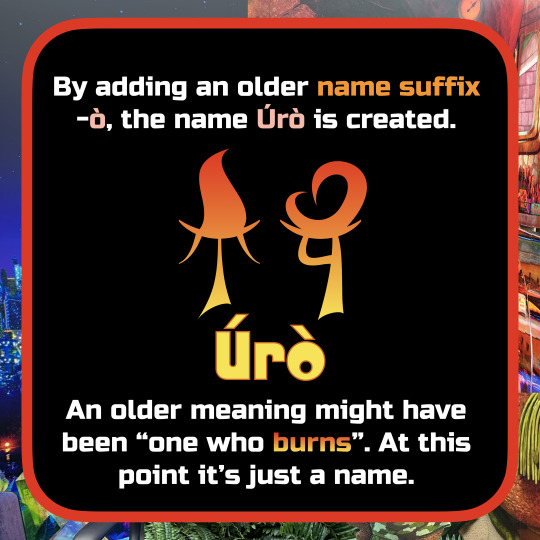
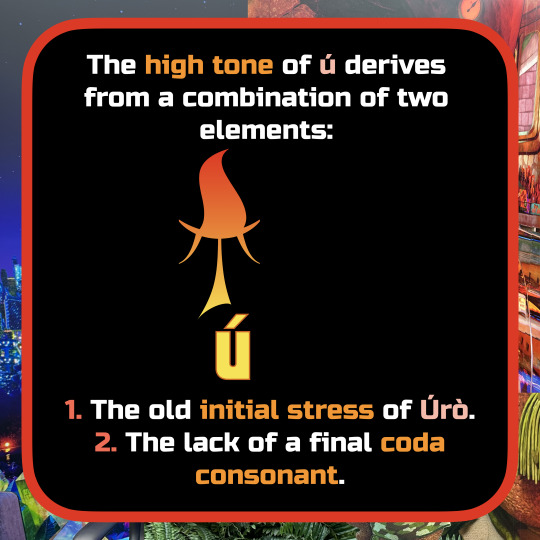
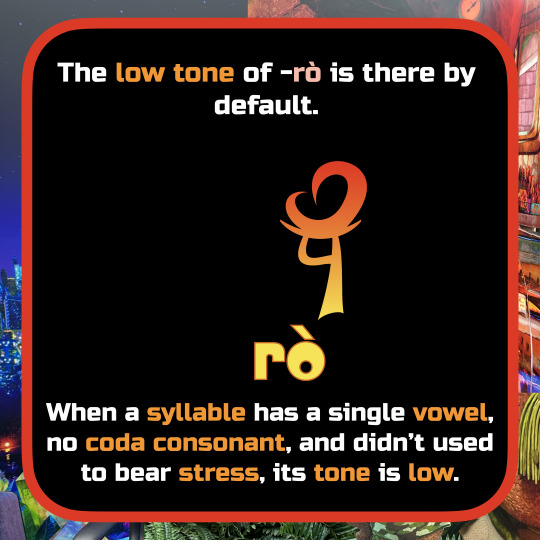
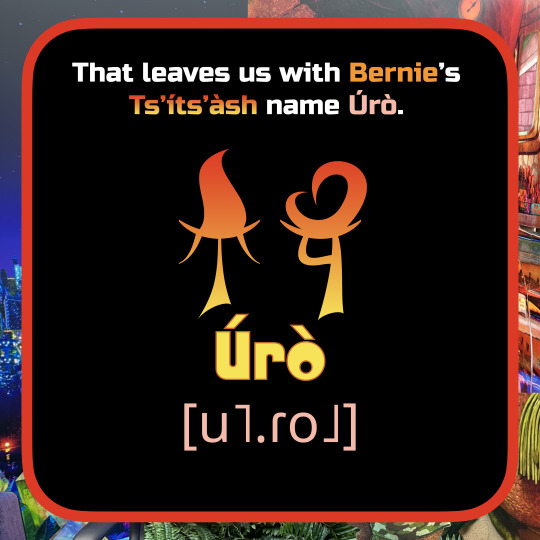
Today we're doing Bernie's name in Ts'íts'àsh. One more to show tomorrow!
#conlang#language#elemental#pixar elemental#elemental pixar#elemental 2023#pixar#ts'íts'àsh#ts'its'ash#orthography#conscript#neography#constructed script#bernie#bernie elemental
202 notes
·
View notes
Note
Hello, I am loving Ts' Íts' àsh and how it’s spoken! I’d love to know if you plan on releasing a full breakdown/alphabet type thing because I would love to learn more about it and how to speak it! I’m already learning parts of it and implementing it into my daily speech to get better at speaking it, especially ashfa. Would love to learn more soon!
Best regards, Samuel
If you're talking about the orthography, I did that here. If you mean the sound system and the romanization, I can do that.
Ts'íts'àsh doesn't have a ton of consonants—very few, in fact. They are as follows (romanized form [IPA]: notes [if any]):
p [p]
b [b]
t [t]
d [d]
t' [t']: this is an ejective consonant
k [k]
k' [k']: this is also an ejective consonant
f [ɸ]: this is a bilabial sound
s [s]
sh [ʃ]
kh [x]
r [r/ɾ]: pronounced like a trill at the beginning or end of a word; otherwise pronounced like a flap
That's it! Nothing too complex. Then there are only four true monophthong vowels:
a [a]
i [i]
o [o]
u [u]
Now this is where things get complicated. Any of the four vowels above or any of the fricatives above can serve as a nucleus. This means you can have a word tkh, psh, or even ss. All of those are licit. You can also have any two vowels in a nucleus—including the fricatives. So while you can only have CVV, you can actually have words like tsá, kshí, or even pskh.
(Small aside: If one of these nucleic fricatives follows an ejective, the ejective marking moves to the right of all the consonants. So a word that begins with k' and then has a nucleus of fó is spelled and pronounced kf'ó.)
There are a number of rules for what happens when two vowels (with vowels including fricatives) come next to one another. The result is too complex to list out in text, so I'm afraid I have to do a table, and since Tumblr doesn't do tables, it has to be visual. Here it is:

So, green means the sequences of vowels are allowed to go together without anything changing. Yellow means the sequence is allowed, but some sort of phonological change occurs. Red means the sequence is disallowed. There is also a general prohibition against three of the same sound in a row, even if one is an onset and two are nuclei. Thus, while ss is licit, sss is forbidden. It is worth noting that several of these vowel-vowel sequences result in monophthongs. This is important for the phonology when it comes to tone assignment. The monophthong sequences are:
*aa > a
*ai > e
*ao/*au > o
*ou/*oo > u
This means that certain instances of the vowels [a], [o], and [u] are phonologically long, and the vowel [e] is also phonologically long (and also brings it up to a five vowel system!). Some other interesting notes:
Long high vowels broke, as in English (so *ii > ai and *uu > au).
The first element of opening diphthongs fortify into a fricative (so *iV sequences become shV and *uV/*oa sequences become fV/fa).
Any time s and sh come next to each other the result is ssh (i.e. [ʃʃ]).
The only consonant f can occur next to as a part of the nucleus is f.
Now, the tones are fairly simple. There are three tones:
High Tone [´]: The vowel is pronounced with high pitch—much the way a vowel is in English when it's stressed.
Low Tone [`]: The vowel is pronounced with low pitch—much the way a vowel is in English when it's unstressed (and also not in front of a stressed vowel).
Falling Tone [ˆ]: The pitch starts off high and falls before leaving the vowel—like when you see a kitty and go, "Awwwwwww!"
How tone is assigned is complex. Good news is if the nucleus is consonantal (just fricatives), there's no tone. Fricatives don't bear tone in Ts'íts'àsh.
The short story for tone is that tone in Ts'íts'àsh came from a combination of an older stress system and cues from onset and coda consonants. An older stressed syllable is called a blaze syllable, and an older unstressed syllable is called a smolder syllable. A smolder syllable will always have low tone unless it has a current or former coda voiceless stop. Then it will have high tone. A blaze syllable can have any tone, but the tone it's assigned depends on the surrounding consonants. Some rules:
If the blaze syllable is open, its tone will be high, unless it begins with a voiced consonant, in which case the tone will be low.
A syllable with one vowel that ends in a voiceless stop will have high tone.
Otherwise, a syllable with a voiced consonant onset will have low tone. The sole exception is a syllable beginning with a voiced consonant that has two vowels and a voiceless stop coda. That syllable will have low tone on the first vowel and high on the second (unless the VV sequence results in a monophthong, in which case the tone is high).
Sequences of two vowels generally have a high-low sequence. The same goes for phonologically long monophthongs.
Coda fricatives will drag tone down.
VV sequences in blaze syllables reduce to singletons in smolder syllables when syllable type shifts in a word (e.g. due to affixation).
And that's all there is to it! It might seem tough to pronounce some sequences we don't have in English, but once you let yourself go and lean into it, it's kind of fun! Jessie and I were both really pleased at how well it was carried off by the actors. They really did a great job!
Thanks for the ask!
#conlang#language#elemental#pixar#pixar elemental#elemental pixar#tsitsash#ts'its'ash#ts'íts'àsh#phonology#phonetics#sir-samuel-iii
75 notes
·
View notes
Note
Please, I need more Ts'íts'àsh in my life. I love that movie so much. Can you share more of the language?
Sure! Here's how verbs work in Ts'íts'àsh.
Verbs have three forms: The imperfect, the perfect, and the conditional. The bare form of the verb is the imperfect, and the perfect and conditional each co-occur with suffixes—-(k)sh and -á, respectively. With the tone, though, stem changes can occur. Here's a summary:
kssh "douses" ~ ksshksh "doused" ~ ksshá "would douse"
kòf "warms" ~ kòfsh "warmed" ~ kófá "would warm"
Here you see the difference between words that end in a sibilant and non-sibilant. When the word ends in a sibilant, it gets a -ksh in the perfect (the k breaks up the sibilant sequences); otherwise it just gets -sh. The conditional suffix is always -á, but in kòf the tone shifts from low to high because the o vowel goes from being in a closed syllable to an open syllable.
Here's how the forms change when a verb ends in a single vowel:
táìsí "dances" ~ táìsíksh "danced" ~ táìsshá "would dance"
khìshk'ù "swells" ~ khìshk'úksh "swelled" ~ khìshkf'á "would swell"
párà "cooks" ~ páráksh "cooked" ~ párá "would cook"
A number of things going on here. The first line represents verbs whose roots end in -i; the second, verbs whose roots end in -o or -u; the last, verbs whose roots end in -a. These are the original four vowels of Ts'íts'àsh (remember that modern e is an older sequence of *ai, and some instances of modern o are older sequences of *au). All three root types take the -ksh perfective suffix. When the final vowel is low, it becomes high. For the conditional, -a final are identical, except that the low tone becomes high. The older *ia sequence for -i-final roots becomes modern -shá, with the high vowel (so older táìsíá became táìsshá). Then for -u/o-final roots, the two rounded vowels become f (which is a bilabial voiceless fricative). In the case of khìshk'ù, any time you have an ejective in a cluster, the ejective marking goes to the end, as the whole thing kind of becomes an ejective.
Now, when a word ends in a double vowel, something slightly different happens:
káì "smolders" ~ káíksh "smoldered" ~ káìrá "would smolder"
We see the same perfect, but when there would be a sequence of too many vowels in the conditional, an r is inserted to break things up. (And recall that fricatives can count as vowels!)
Those are the verb forms of Ts'íts'àsh. The bare root is used for both the imperfective and imperative. A couple examples are shown below:
Àshfá ts' páràfò �� àsshì. "Father is talking to the chef."
Àshfá ts' páràfò ì àsshíksh. "Father talked to the chef."
Àshfá ts' páràfò ì àsshìrá. "Father would talk to the chef."
Negation is simply achieved by the negative ùkh at the end of the sentence:
Àshfá ts' páràfò ì àsshì. "Father is talking to the chef."
Àshfá ts' páràfò ì àsshì ùkh. "Father isn't talking to the chef."
If you're wondering about the future, that's accomplished with the imperfect and either some time designation or discussion of the future being the context. An example is shown below:
Àshfá ts' páràfò ì àsshì. "Father is talking to the chef."
Ráìbáp r àshfá ts' páràfò ì àsshì. "Father will talk to the chef tomorrow."
Jessie and I had a lot of fun designing this verb system. We'd done some maximal verb systems recently, so doing something super minimal that would rely on adverbs and auxiliaries to fill things out was quite refreshing.
Thanks for the ask!
#conlang#language#raventheunkind#elemental#pixar elemental#tsitsash#ts'its'ash#ts'íts'àsh#quothalinguist
103 notes
·
View notes
Note
In the language Ts' Íts' àsh is the full English's alphabet used or is it only the sounds provided to make words? I would love to learn this to the fullest of my extent but the post is somewhat difficult to follow and learn.
I think I might be able to help with some terminology and to clear up some assumptions.
First, there are two levels of representation for the language. One is the orthography. The orthography are the unique characters that are used to spell the language that look like this:
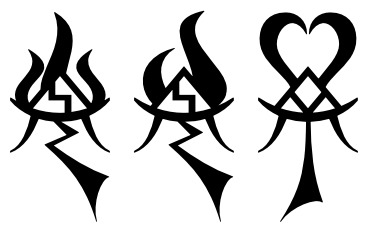
For the actors, we have a romanization system. This system uses the Roman alphabet (the one we use for English) so actors know how to pronounce the language without having to learn anything extra (like how to read all that above).
The writing system for Ts'íts'àsh is complex and it doesn't line up neatly with its pronunciation. You can learn how to use it (check out the full system here), but it's probably best to just figure out how to spell each word you want, and then learn the spellings for the various grammar bits. The writing system was created for the language. Just like there's no equivalent of "q" in Japanese, there's absolutely no relationship between the Ts'íts'àsh writng system and the Roman alphabet. There is no "version" of "q" or "x" or "j" in the Ts'íts'àsh writing system.
The romanization is fairly manageable. There's just the consonants needed for the language (p, b, t, d, t', k, k', f, s, sh, kh, r), the vowels (a, e, i, o, u), and the acute, grave, and circumflex accents for tone (á, à, â). There's no need for any other letters to spell everything you need to in Ts'íts'àsh.
So really all you should bother with is learning the sound system and how each thing is spelled. It's not difficult, as almost every symbol is identical to its IPA equivalent, and the digraphs are fairly explicable.
If that doesn't help, maybe this will help you formulate a more specific question. Either way, thanks for the ask!
47 notes
·
View notes
Note
Hi, hopefully this is a simple ask, but do you think you could explain what the tones for Firish sound like with some examples (it can be pointing to sounds in specific English words, I'm not expressly asking for audio examples haha)? I'm trying to look up the ways you've described them to find examples but I'm having a hard time, and I want to make sure I'm understanding them correctly ;; thank you!
Hey! First, just as with all my work, you can find audio samples here:
https://dedalvs.com/work/
So you can hear all the Ts'íts'àsh lines there.
Ts'íts'àsh is a level tone language with only two tone levels, so it's just up and down. Compare subject the noun to subject the verb. That's pretty much a HL and LH tone pattern. If you can distinguish those, you can do the tones of Ts'íts'àsh. The only difference is that you can sequences of H and L tones in Ts'íts'àsh while you can't really in English, and you can also get a H followed by a L in a single syllable. But the tone levels are still just high and low.
Does that make sense?
#kitkatpurrpurr#conlang#language#elemental#disney elemental#pixar elemental#disney#pixar#Ts'íts'àsh#ts'its'ash#tsitsash#firish#tone#phonology
40 notes
·
View notes
Text
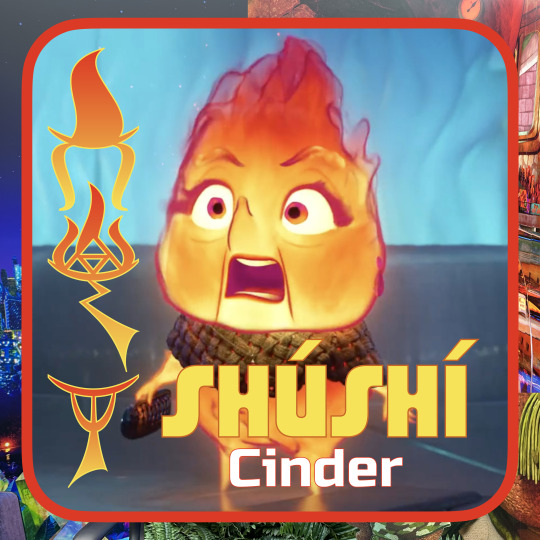

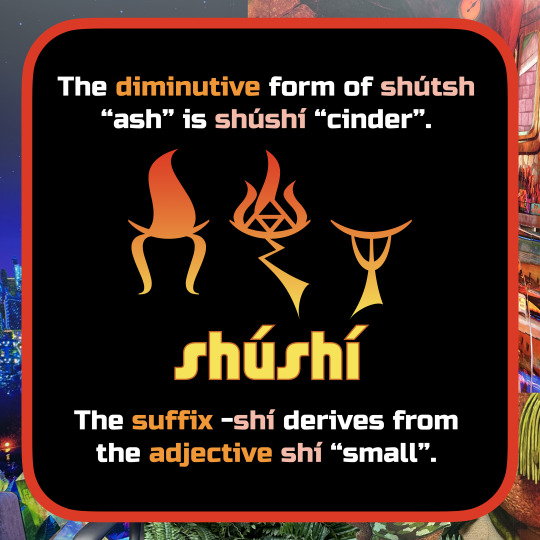
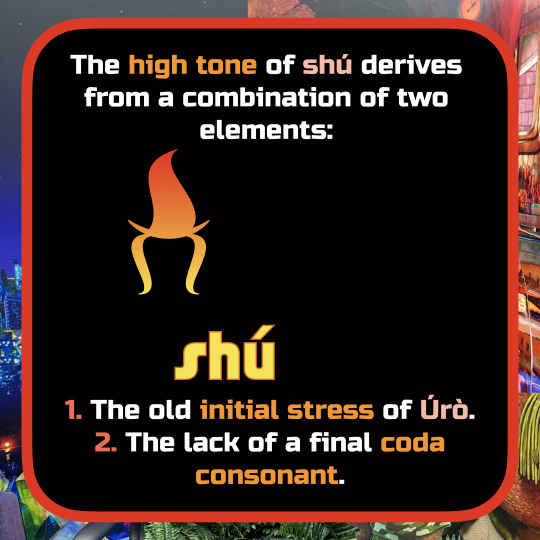
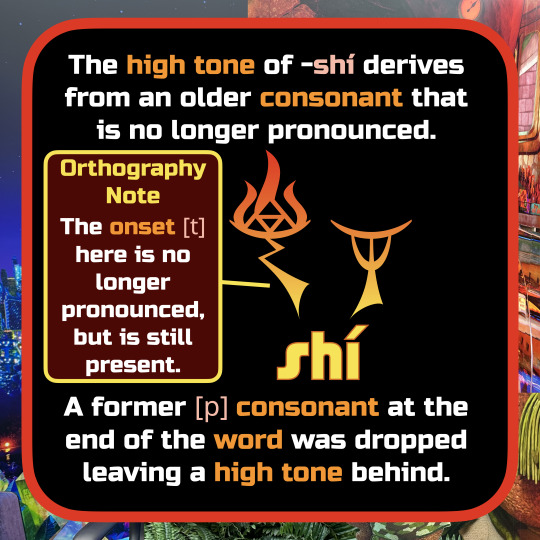

This is Cinder's name. It involves some irregular leveling that neither Jessie nor I remember doing, but it's how it is now! Or as you'd say in Ts'íts'àsh: E...shútsh.
#conlang#language#elemental#elemental pixar#pixar#pixar elemental#cinder#cinder elemental#orthography#neography#conscript#constructed script
247 notes
·
View notes
Note
Not a question but I just got around to watching Elemental and I when I saw yours and Jessie Sams' (not sure if she has a tumblr) posts on Instagram about Firese my first thought was "wait Elemental has an actual conlang, why?", my second thought was "oh this is a really cool conlang" though I was still confused as to how it would fit into the movie and was worried it would barely be in the movie. After watching the movie I thought it was really cool how it behaves like most any other heritage language in the dialogue of the movie and I definitely understand why a conlang was created for that (and I'm glad it was such a cool one, tone is highly underutilized in conlangs and as a speaker of language with lexical tone I make sure to include it in many of my conlangs) and my only complaint is that I would've liked the characters to be referred to in their Firese names more in the movie but I totally get why that didn't happen.
We both would've loved that, too, because we had fun coming up with their Ts'íts'àsh names, but on the whole, Jessie and I were very pleased with how the language was used in the movie—and with the movie in general. Glad you liked it! <3
44 notes
·
View notes
Text
Kopikon - September 23rd - Georgetown
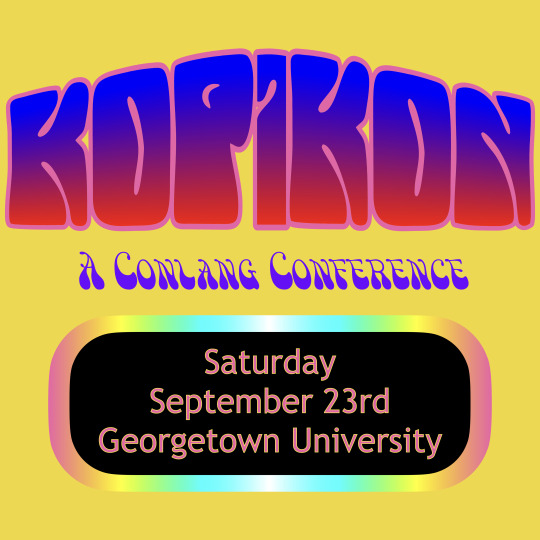
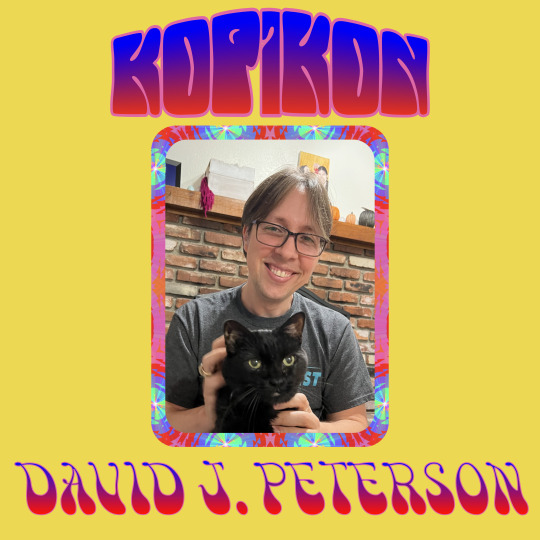

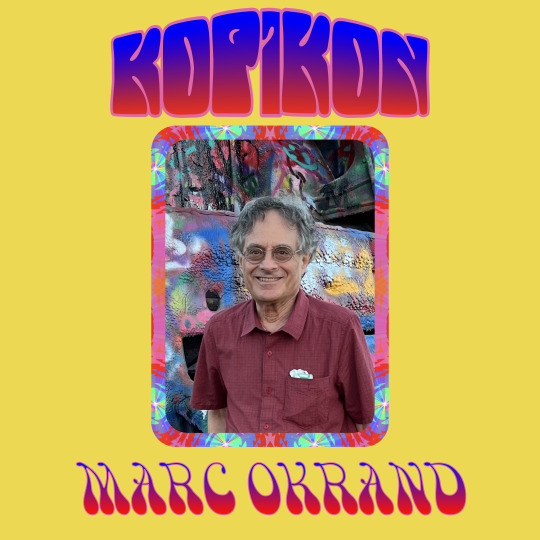


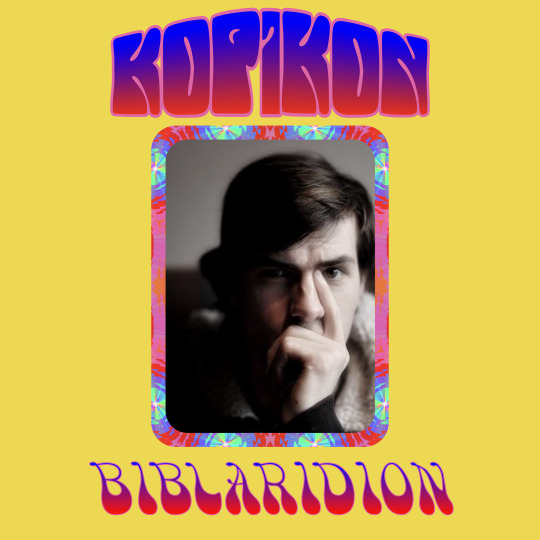
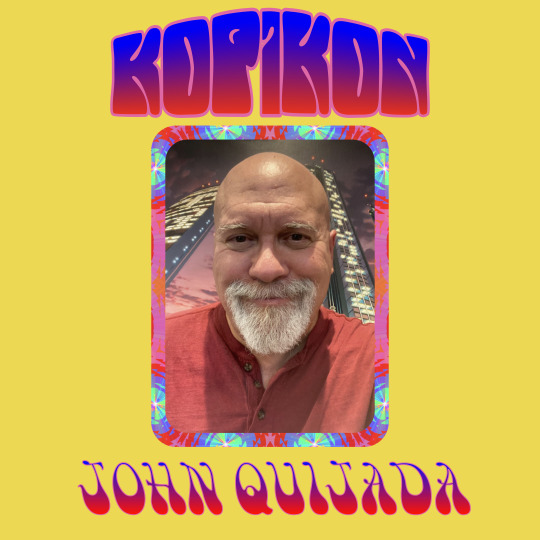
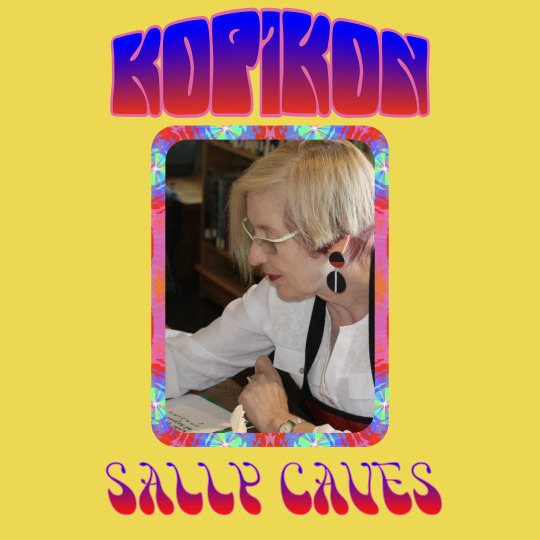
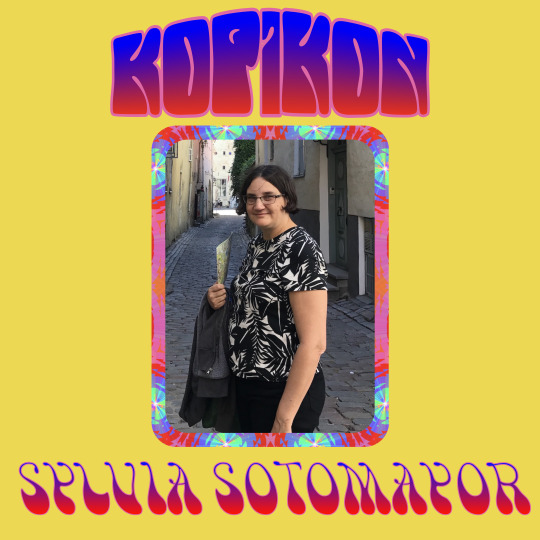
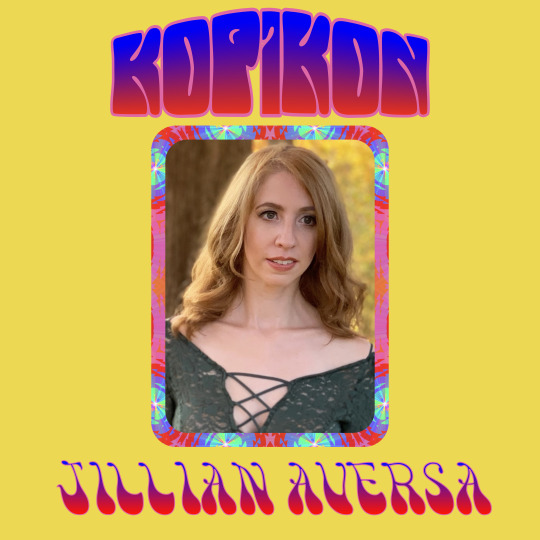


Kopikon is coming to Georgetown University, September 23rd! We have a ton of fantastic conlang presenters, and a few spots are still available! If you're interested in registering, go here:
Our presenters are:
David J. Peterson: Creator of Dothraki, Valyrian (Game of Thrones/House of the Dragon), and Trigedasleng (The 100)
Jessie Sams: Creator of Ts'íts'àsh (Elemental), Méníshè (Motherland: Fort Salem), and Aazh Naamori (Vampire Academy)
Mark Okrand: Creator of Klingon (Star Trek) and Atlantean (Atlantis)
Paul Frommer: Creator of Na'vi (Avatar)
Carl Buck: Creator of Sangheili (Halo)
Biblaridion: From his self-named YouTube channel
John Quijada: Creator of Ithkuil
Sally Caves: Creator of Teonaht and the character Reginald Barclay
Sylvia Sotomayor: Creator of Kēlen
We've also got a musical performance from the incredible duo Jillian and Andrew Aversa.
We'd love to see you there!
#conlang#language#the 100#game of thrones#defiance#orthography#valyrian#linguistics#hbo#trigedasleng#elemental#star trek#avatar#na'vi#klingon#halo#sangheili#st tng#st ds9#ithkuil#biblaridion#john carter#atlantis#disney atlantis#atlantean#the witcher#witcher#dune#warcraft#kopiko
37 notes
·
View notes
Note
Hello. I've been playing around with creating a conlang for a fanfic I'm working on, but I may be over my head, particularly in regards to trying to pin down the rules for grammar. From the looks of things, most of the languages you create are for 'alien' worlds, ie not based on a real human culture, but if you were asked to do that, would you say it's easier or harder?
Hmmm... I'm not sure that's true. Languages I've created for "alien" cultures:
Castithan
Indojisnen
Inha
Irathient
Kinuk'aaz
Lishepus
Sangheili
Sondiv
Ts'íts'àsh
Languages I've created for human cultures:
Aazh Naamori
Afata
Astapori Valyrian
Azrán
Bodzvokhan
Chakobsa
Dothraki
Fjerdan
Gandal
G'vunnǝ
Hen Linge
High Valyrian
Kezhwa
Méníshè
Munja'kin
Noalath
Övüsi
Ravkan
Shivaisith
Shu
Trigedasleng
Veda
Zemeni
I don't think it's easier or harder. It's pretty much the same.
17 notes
·
View notes